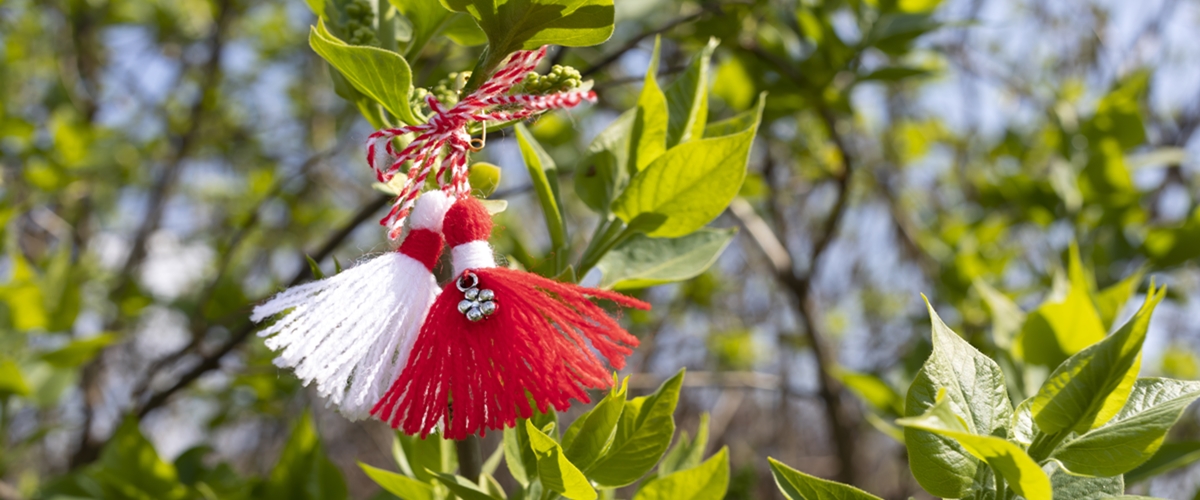

- Home
- Mărțișor - spring tradition
Mărțișor - spring tradition
Mărțișor is the Romanian term for a springtime custom celebrated in the month of March, as well as the name of the associated item created in Romania and Moldova from two braided red and white ropes with a dangling tassel. Mărțișor is a diminutive of marţ, the traditional folk name for March (martie in contemporary Romanian), and literally means "small March."
Today, a Mărțișor is produced nearly entirely of silk threads in red and white. Charms, principally coins, generally silver, or cross pendants, were tied to the threads. These decorations were later made to imitate various motifs such as a four-leaf clover, ladybird, snowdrop and so on. Observers of the tradition have given general explanations for the object's appearance: the strings are thought to represent "funia anului" - the year's "rope", connecting summer and winter, and the necklace symbolised fortune and wealth, or, like a talisman, brought and preserved the wearer's good health and beauty.
The item was mostly worn by children and women, less frequently by males, and less rarely by the elderly. It is common to attach the object to a tree limb or hang it on a fence as a gift for migrating birds coming from the south. The practise of leaving the Mărțișor under a rock, with the sort of insects discovered on the place understood as signs, dumping it into a spring or river, or even burning it was less frequent north of the Danube.They are frequently saved as keepsakes in current times.
The ritual is grouped with other spring festivals that reflect the year's cycle: communities of farmers connected it with the end of winter and the beginning of spring. It is associated with the days of "Baba Dochia," a legendary person in Romanian culture, and March, which was the beginning of the year in mythology.

Adventure, bike and eco tours
Wine and gastronomy tours
Adventure, bike and eco tours
Wine and gastronomy tours


.png)




